Kansas Turnpike Turns to Asphalt for Fast, Reliable Upgrades
BY AsphaltPro Staff
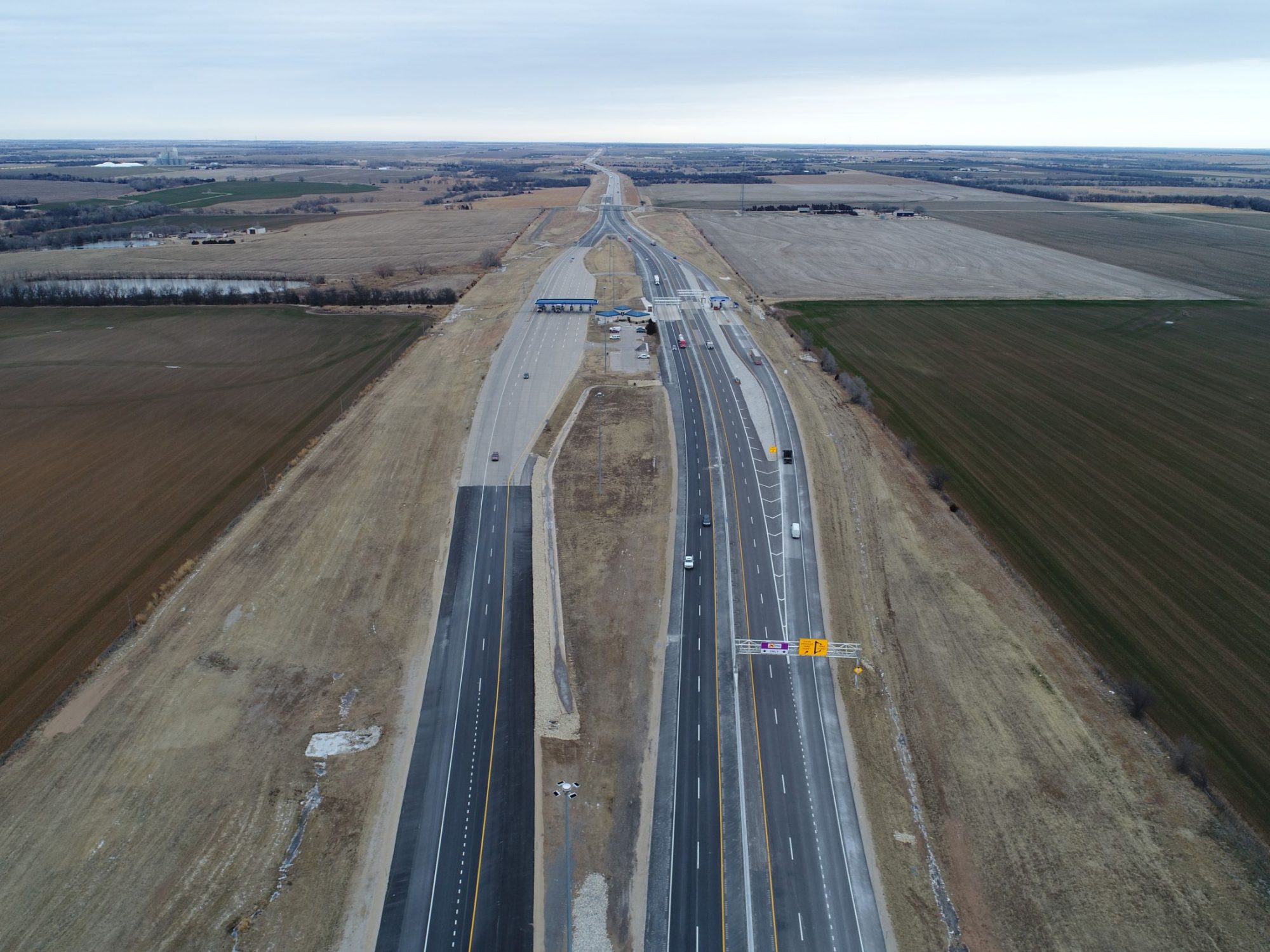
An average of 18,000 vehicles per day travel through the Kansas Turnpike Authority’s southern terminal, according to the Kansas Department of Transportation. The terminal, located 17 miles north of the Kansas-Oklahoma border on Interstate 35 near the town of Wellington, Kansas, is the third terminal KTA has upgraded to offer open road tolling.
Open road tolling aims to improve operations, reduce delays, and improve safety by separating high-speed and low-speed traffic traveling through the toll zone. Motorists with electronic transponders in their vehicles are able to travel in high-speed lanes, while motorists requiring a ticket exit the highway to pay the toll.
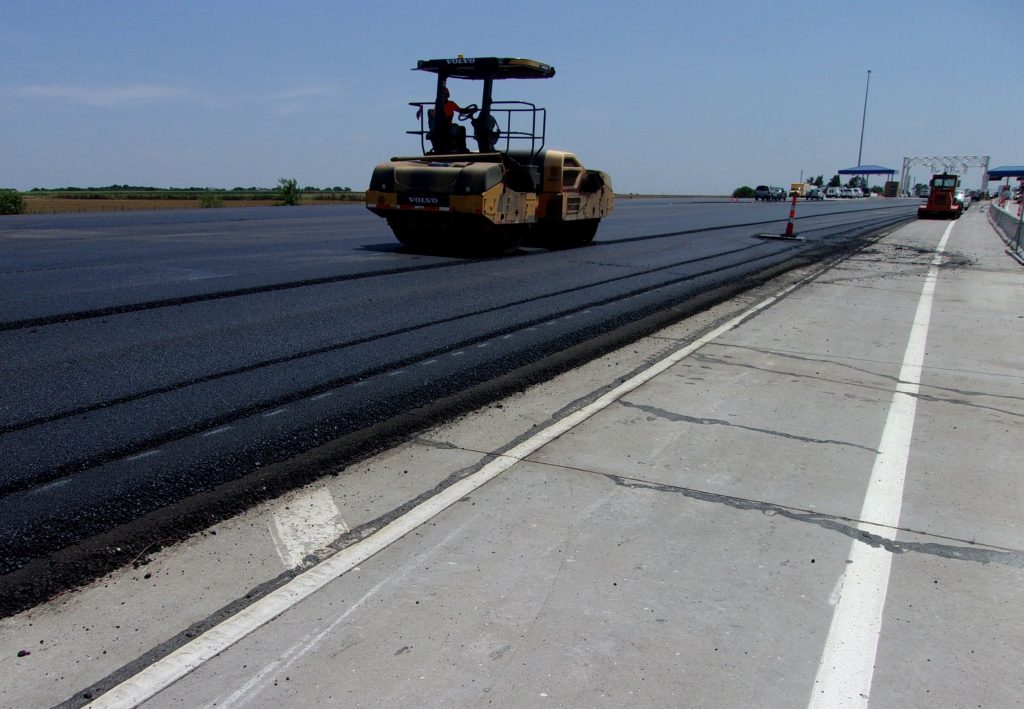
This picture illustrates the layers of asphalt Venture’s crews paved to get the new pavement’s slope right. “This is construction of the new northbound high speed lanes,” Scott said. “Northbound traffic is using the west half of the old northbound lanes in the plaza, which ultimately became the SB high speed lanes.” In the distance is the canopy for the new northbound cash entry lanes (left), the new overhead northbound gantries (middle), and the existing toll building for collectors and supervisors (right).
“We had a separate lane for electronic transponder traffic, but they still had to slow down to 20 miles per hour or even queue since there was no major separation between that lane and the cash lanes,” KTA Engineer Glen Scott said. “It was like putting a gate across the highway.”
Open road tolling relies on the use of overhead sensors and cameras on gantries over the high speed lanes, as well as loops in the pavement below to classify, identify and toll electronic customers. Although this open road tolling concept wouldn’t be possible without this technology, it also relied on reconfiguring and expanding the existing roadway to accommodate separate transponder and ticket traffic segments in both directions.
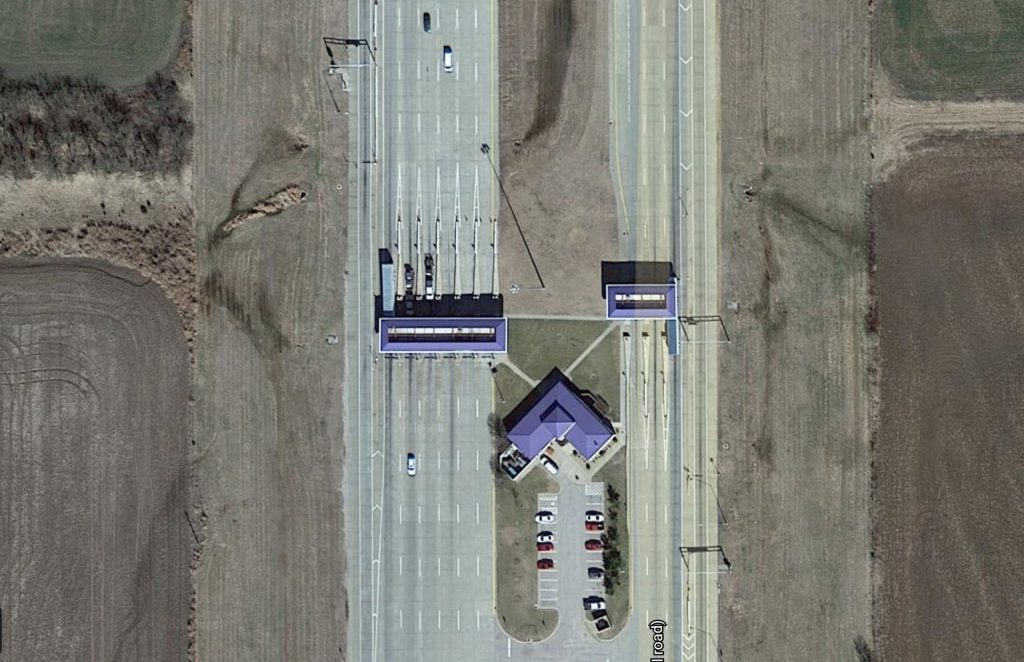
This photo illustrates the configuration of the old southern terminal. Photo courtesy of Google Earth
To accomplish this, KTA decided to implement a traditional diamond-style interchange that would allow ticket traffic to exit the highway to pay the toll without delaying other drivers. The exit plaza offers enough space for multiple vehicles to stack up in each lane without traffic backing up onto the ramp.
By using asphalt on the project, KTA was able to improve traffic phasing while utilizing the existing roadway. The only new construction was the northbound cash entry lane, which was built first and then used to accommodate mainline traffic while the northbound and southbound high speed lanes, as well as the southbound toll plaza ramps, were resurfaced.
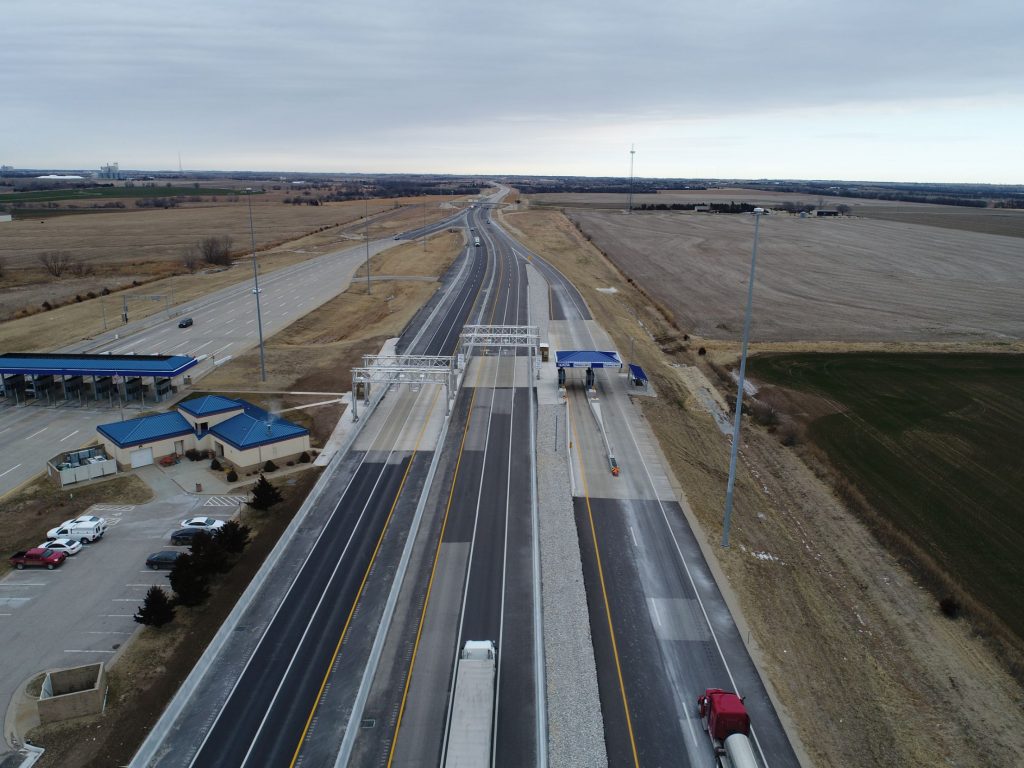
This photo illustrates the flow of high speed traffic beneath the silver overhead gantries in the middle of the photo. Northbound cash entry lanes are seen to the right of the gantries, with southbound cash entry lanes to the left.
Venture Corporation, Great Bend, Kansas, was the general contractor for the $15.3 million job. According to Venture Engineer Jeff Barnes, the south terminal project was quite complex. “This was one of the most challenging jobs I’ve ever paved,” Barnes said.
The new construction for the northbound cash entry lane was the straightforward part. A subcontractor performed the grading, placed 12 inches of crushed concrete for the base, and trimmed it to grade before the Venture crew began paving. The asphalt overlay atop the existing concrete pavement is where the project grew in complexity.
The majority of KTA-managed roads are asphalt.
Using the existing roadway required some realignment. As a result of this realignment, the high speed lanes curve a bit as drivers approach the terminal.
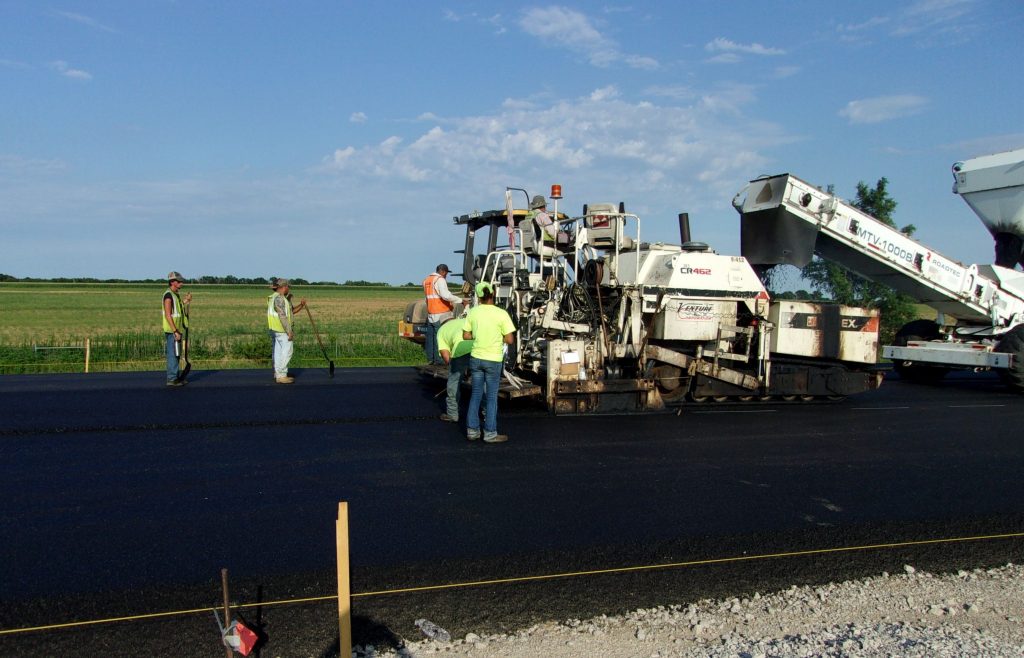
The first lift, over the old concrete road, was paved with a spray paver from Roadtec, Inc., Chattanooga, and the remaining lifts were paved with a Cedar Rapids CR462 track paver. Venture’s Roadtec 1000 and Roadtec 2000 shuttle buggies were used throughout the project.
“The existing roadway was straight as an arrow and the pavement was sloped for drainage, but the new curves required us to adjust the amount of banking in the roadway,” Scott said. There was a pair of reverse curves at each end of the project that were required to shift the southbound mainline traffic into the reconfigured high speed corridor.
“With asphalt, we were able to come in with multiple lifts and slowly work our way up to develop that superelevation to accommodate the curves,” Scott said. The maximum amount of superelevation for the new curves was 3.4 percent over the existing roadway, which had a 1.6 percent crown and 4.2 percent shoulder slopes. “Paving in multiple lifts to build up the wedges allowed us to pave without tearing out the existing roadway.”
The reconstruction of the southern terminal began in September 2018 and was completed in December 2019. It required a total of 70 days of paving.
The high speed lanes were 3,000 feet long in each direction, but a short segment of concrete encasing the pavement loops for the high speed tolling lanes required Venture’s crew to pave 1,500-foot passes on each side of the pavement loop, haul equipment to the other side of the concrete strip to avoid disturbing crews working on the pavement loops and gantries, and then pave another set of 1,500-foot passes. Venture also paved the ramps for the ticket booths.
On one side of the high speed toll zone, the crew had to mill 2 inches on the shoulder while building the centerline up by 2.5 feet. On the other side of the terminal, the crew had to mill 2 inches off the centerline and build the shoulder up by 2.9 feet.
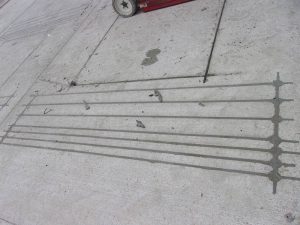
Overhead sensors and cameras are mounted to gantries over the high speed lanes to classify, identify and toll KTA’s electronic customers. Detection loops in the pavement below work in conjunction with the overhead equipment to count axles so vehicles can be tolled at the appropriate rate.
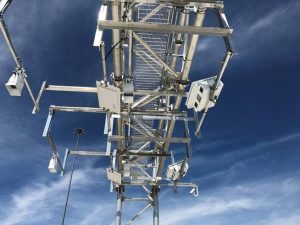
Overhead sensors and cameras are mounted to gantries over the high speed lanes to classify, identify and toll KTA’s electronic customers. Detection loops in the pavement below work in conjunction with the overhead equipment to count axles so vehicles can be tolled at the appropriate rate.
“The alignment, slope and elevation of the new road didn’t match the old road,” Barnes said. Venture’s paving crew relied on a stringline to overcome this challenge. “By the time we finished this project, we were very skilled paving off a stringline. Not once did we set the paver down and just pave.”
Venture normally paves overlays and uses a traveling stringline. For full-depth paving, they normally trim the base off of an elevated stringline and then lay thickness with its paver and check intermediate thickness with coring or surveying.
“Paving off an elevated string-line was necessary on this project because the only lift with a uniform thickness was surface,” Barnes said. “All other lifts started at 0″ depth and increased to a maximum of 4″ depth and then ended at a 0″ depth.”
Venture’s project manager Justin Gabel was instrumental in keeping Venture’s paving crew informed on slope and transition sections and stringline paving grades, and Superintendent Ben Sanders was the go-to guy for ensuring the paver operator and screed operator were performing their jobs at a high level of quality, Barnes said.
Because they could only place lifts up to 4 inches thick, Venture’s crew paved as many as 10 passes in some areas to build depth. The base mix was a BM-2C PG64-28, the top lift base mix was a BM-2C PG70-28, and the surface mix was a BM-1C PG70-28. Venture produced the 55,000 tons of asphalt used on the project with its 400-tph portable asphalt plant purchased in 1991 from CMI Roadbuilding, Oklahoma City.

Although concrete was used beneath the gantries to house the pavement loops, the majority of the southern terminal project was asphalt. By using asphalt, KTA was able to quickly reconfigure the existing lanes and add additional lanes without as much impact on the traveling public.
The first lift, over the old concrete road, was paved with a spray paver from Roadtec, Inc., Chattanooga, and the remaining lifts were paved with a Cedar Rapids CR462 track paver. Venture’s Roadtec 1000 and Roadtec 2000 shuttle buggies were used throughout the project.
Despite the sheer number of lifts, Venture was able to achieve compaction following normal rolling procedure, using two Volvo double drum rollers for compaction and one Volvo double drum roller for finish rolling. “We were able to lay two lifts in the same location a few times while we were deep in the base,” Barnes said. “Then we were limited to one lift per location per day.”
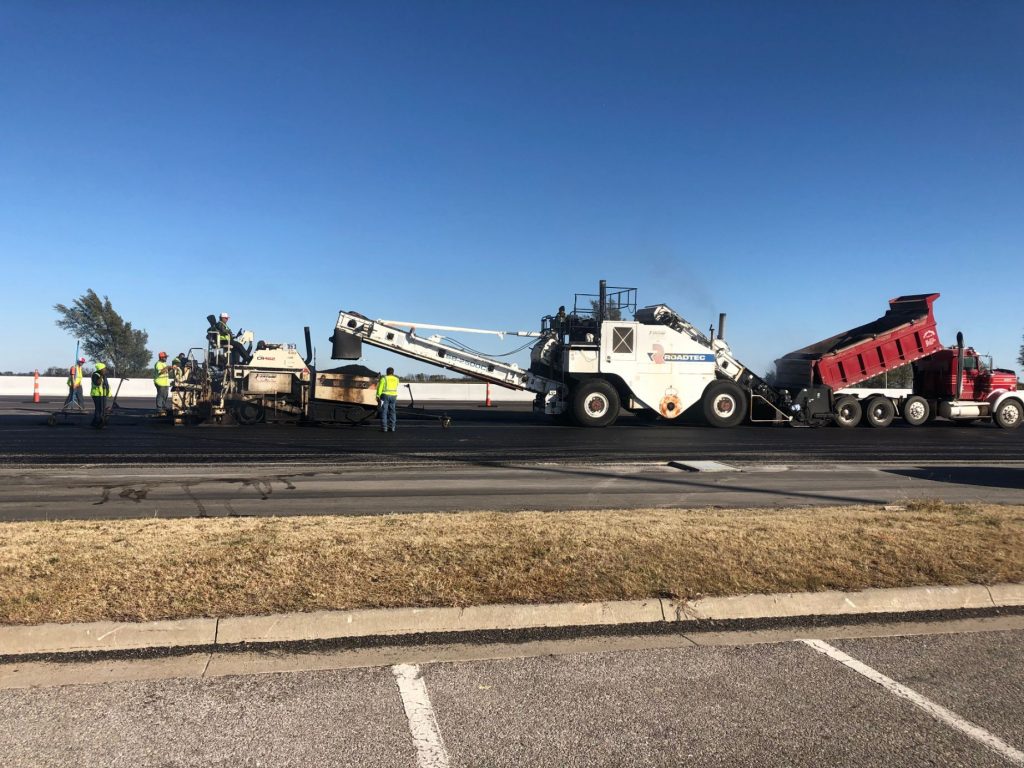
The first lift, over the old concrete road, was paved with a spray paver from Roadtec, Inc., Chattanooga, and the remaining lifts were paved with a Cedar Rapids CR462 track paver. Venture’s Roadtec 1000 and Roadtec 2000 shuttle buggies were used throughout the project.
As construction progressed, there were many field changes on the project. Barnes said KTA’s project manager Mark Roberts was integral in getting these approved quickly. “Roberts had the authority and the knowledge to make decisions on the project with little or no delay,” he said. “Change orders worth tens of thousands of dollars were executed on the spot with no delay in construction.”
Scott said he believes the open road tolling concept has encouraged the use of transponders among motorists. “To see traffic going through the toll at 70 miles per hour is quite an incentive to use the electronic transponders,” he said.
